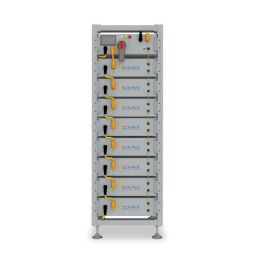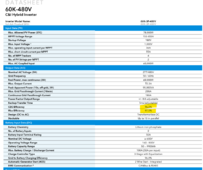Does anyone know the efficiency on a HV inverter such as Sol-Ark's 30k and 60k as compared to a 48v system? Seems to me that if there is not much difference in efficiency, then the "sweet spot" on battery voltage for a residential size inverter would be in the 75-125V range. High enough to run small (ish) cables (~#4-#6?) yet low enough to minimize shock hazard. Seems to me that a 200v+ battery should have 2 pole breakers, GFI protection, etc. to keep from someone getting electrocuted.
Where a higher voltage battery would be nice is for commercial size systems. (Such as Sol-Ark 30k/60k.)
On residential installs (at least at this point) most people don't need more than 15-20kW of inverter, and a 20kW 120/240v inverter would be pretyy big! More likely to stack 2x 10-15kW units. 15kW at 125Vdc is 120A. #2 Copper can handle that current, and with a cable length of 6 feet my calculator says the voltage drop would be 0.218%. Even 1/0 cable is not hard to work with!
@Hedges I could see though that using the batteries directly as the HV DC bus could increase efficiency and possibly make it worth going that direction.
And also, I agree that it seems most HV battery inverter options so far have terribly wimpy surge! (And even a lot of the AIO 48v ones as well.) Everyone seems to think that on a grid-tied hybrid inverter you can get away with not much surge, but the instant the grid goes down, you need that surge capability! And a widespread extended grid down scenario would probably pretty quickly get a lot of peoples' attention when their existing inverters would fall on their faces!






